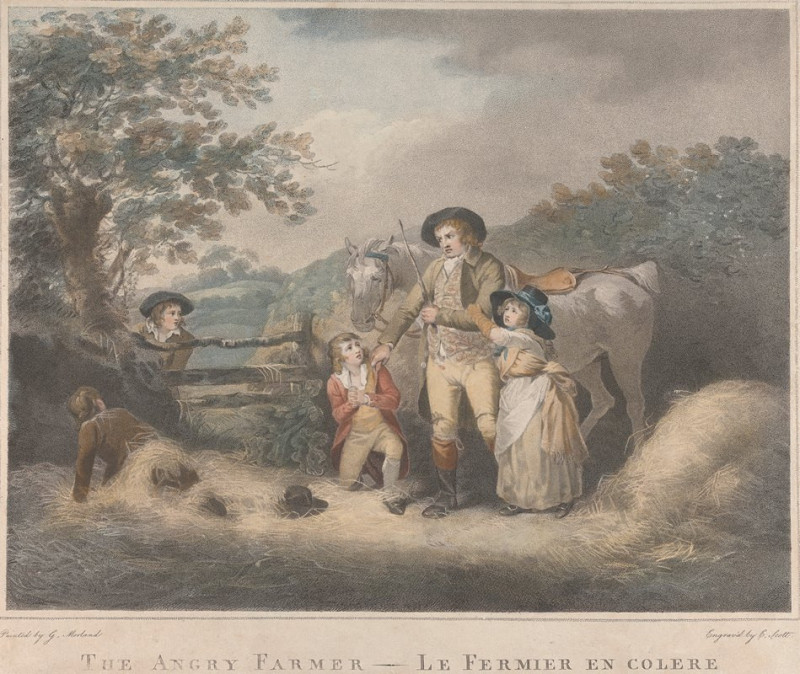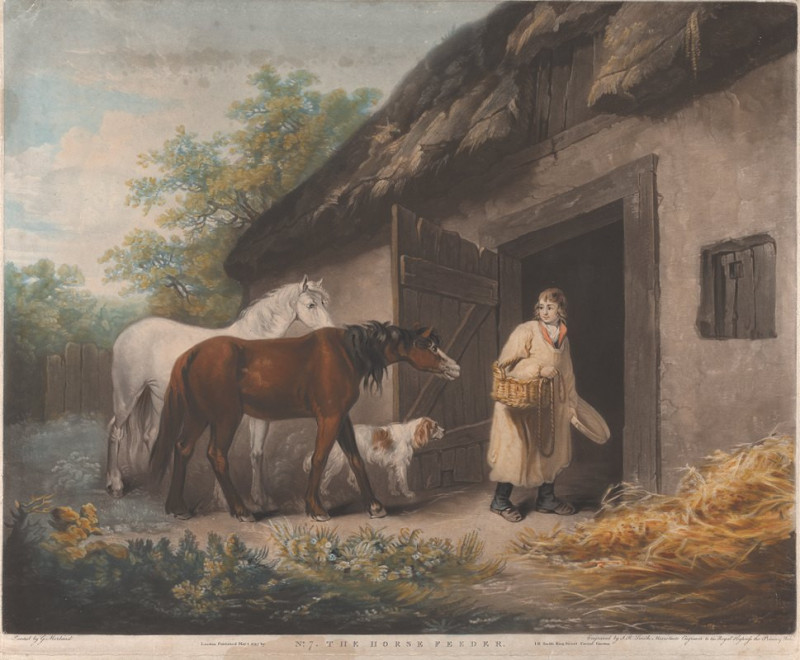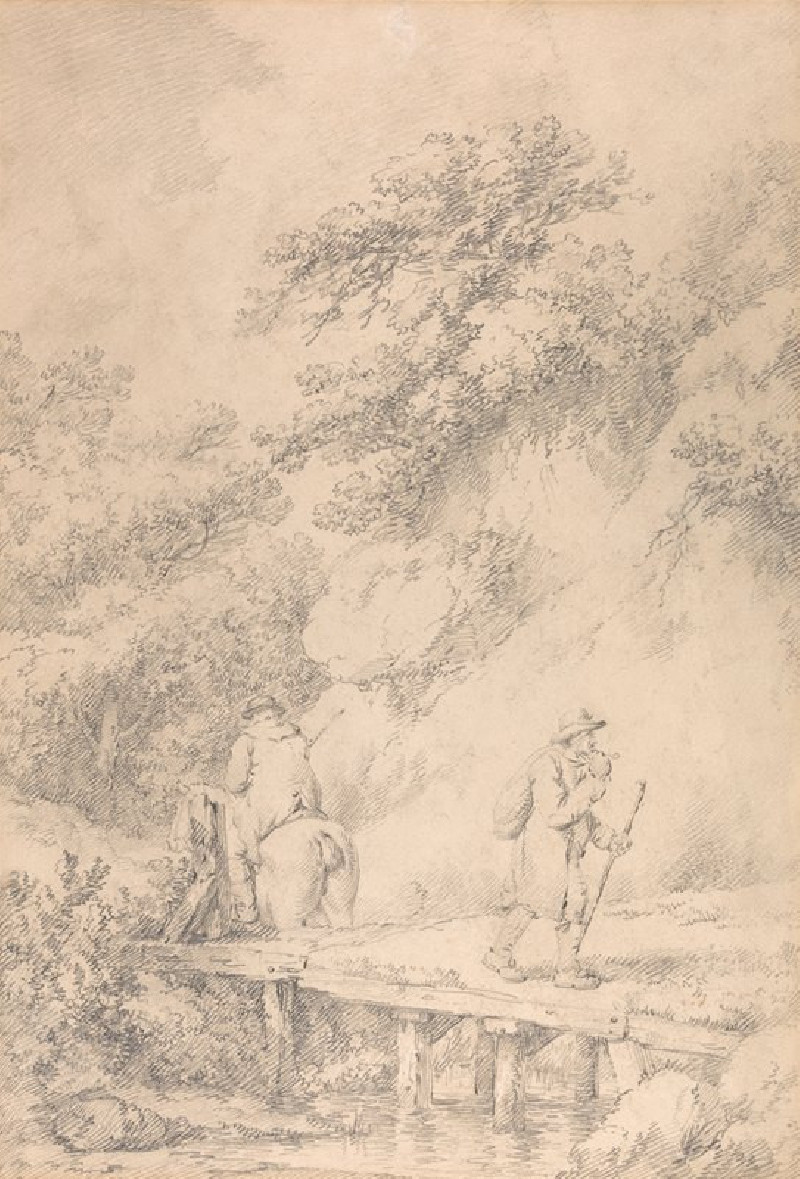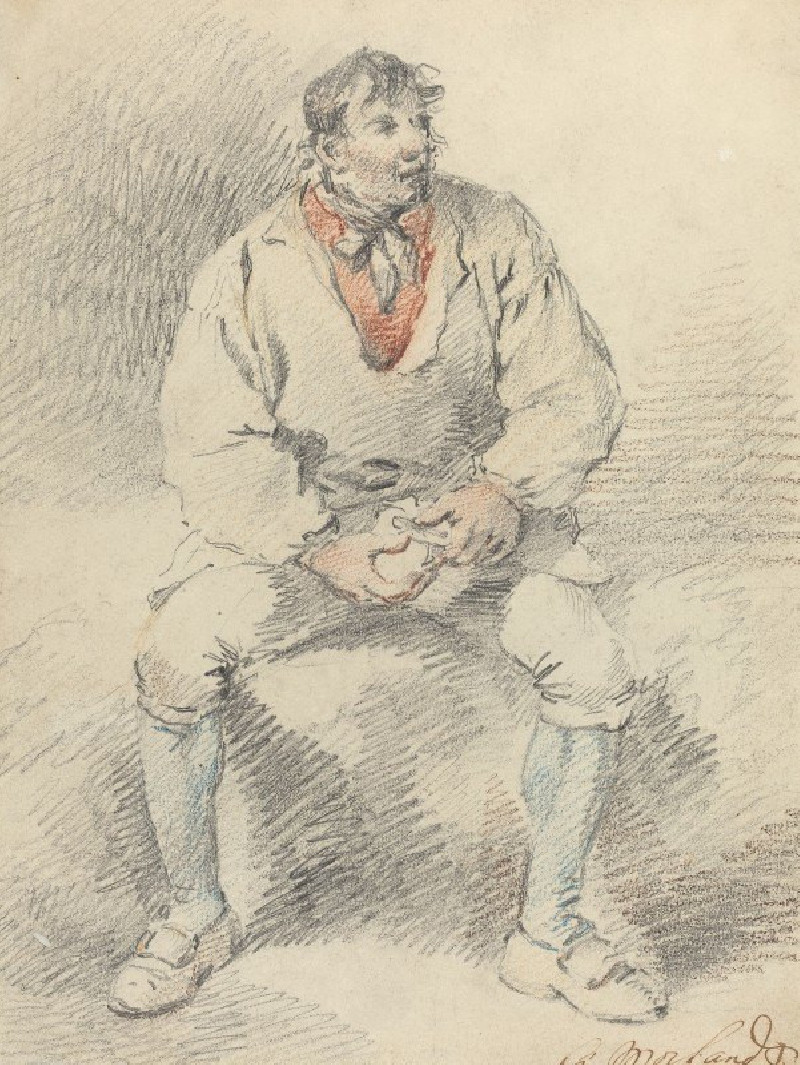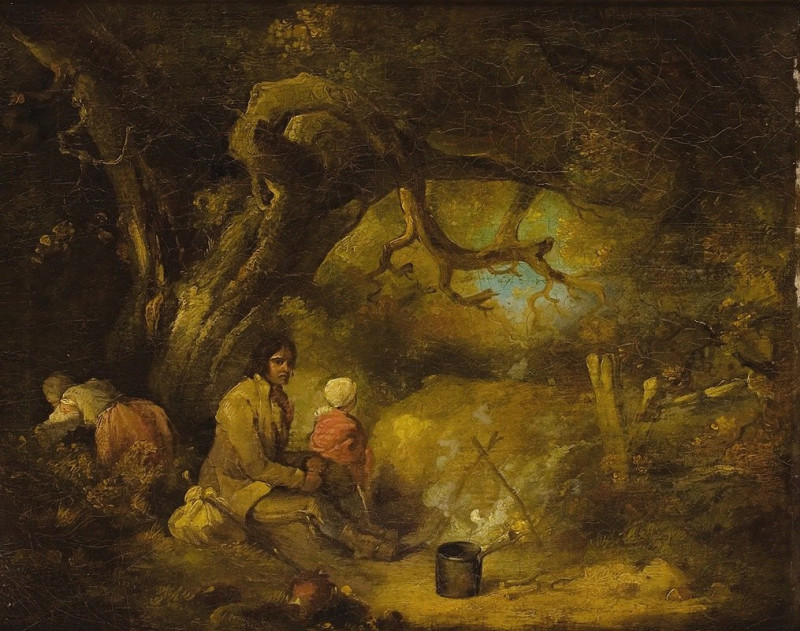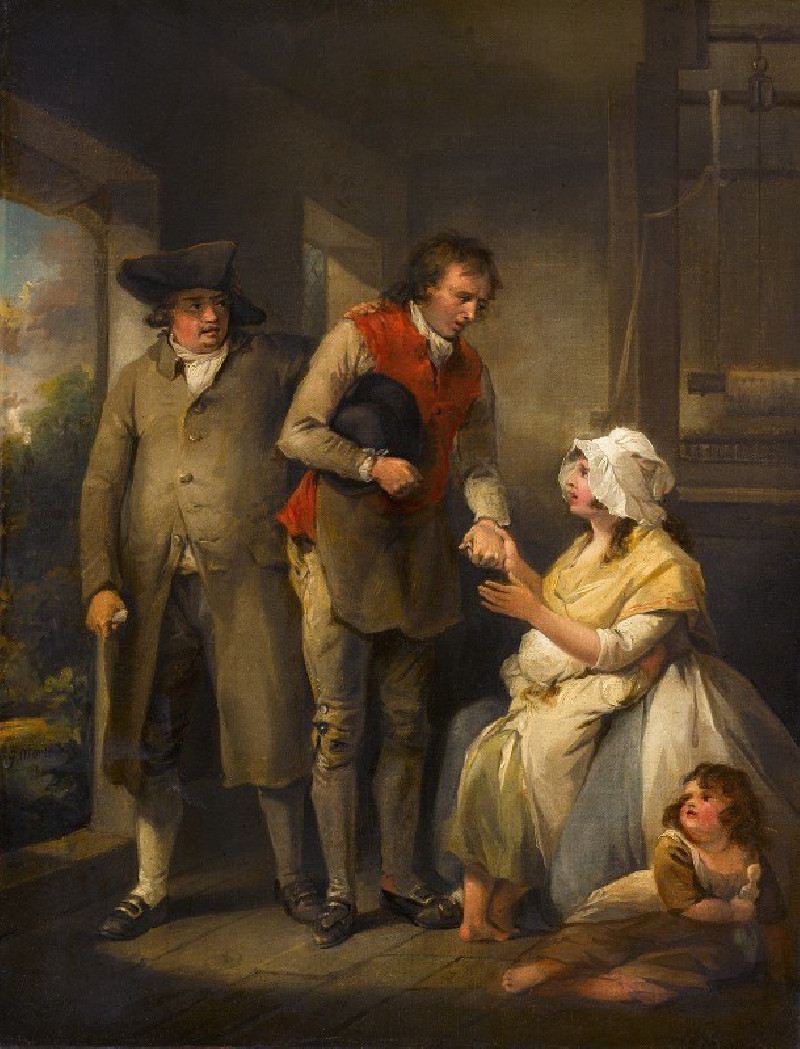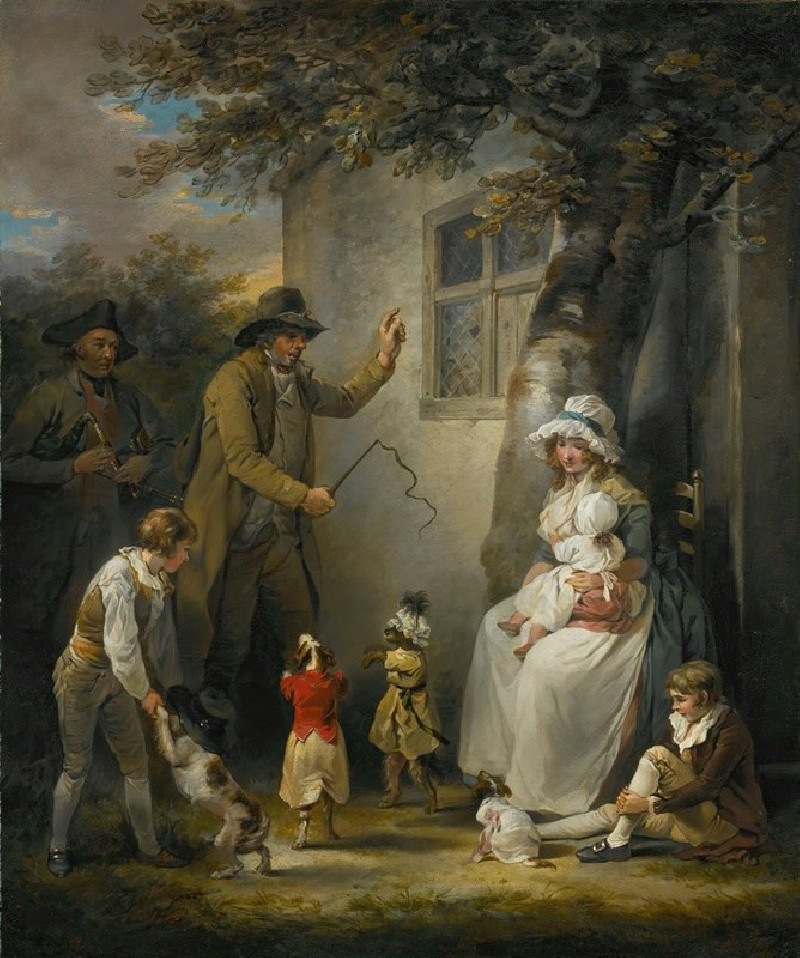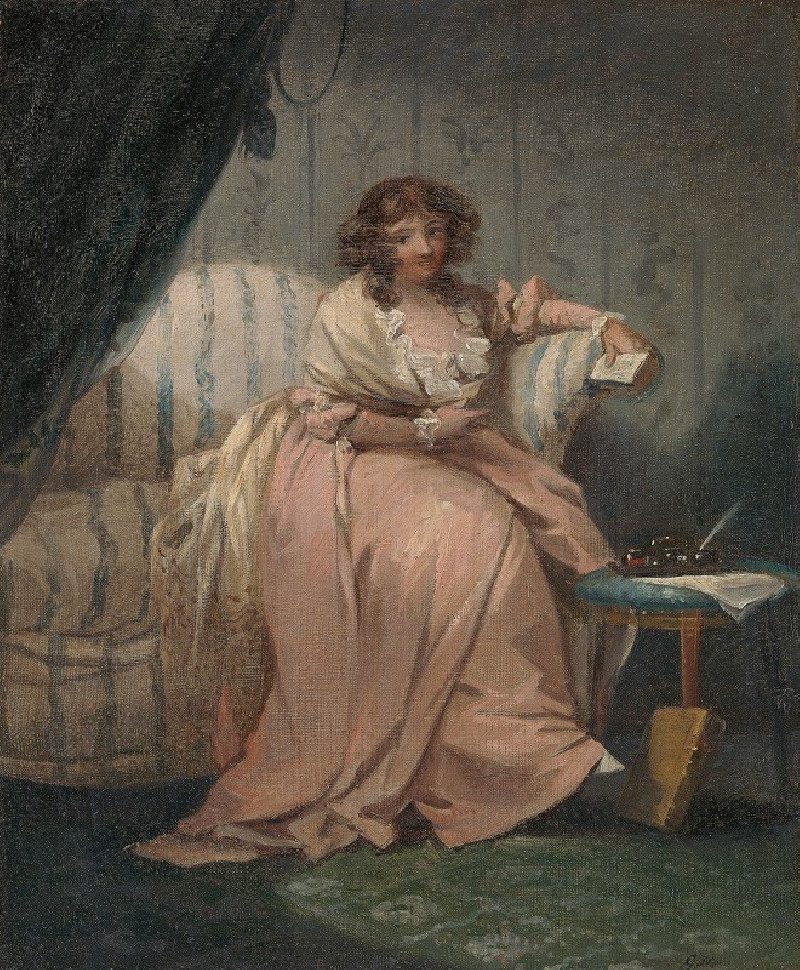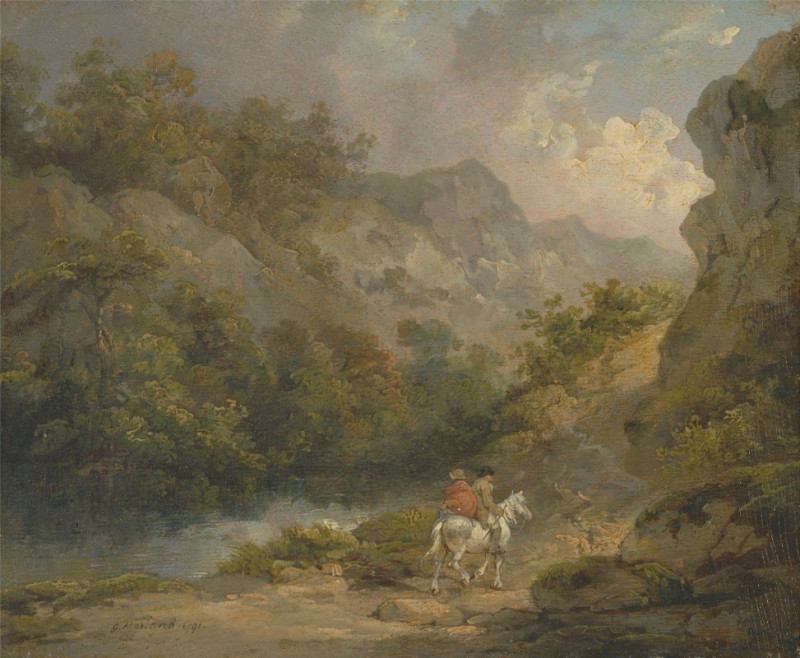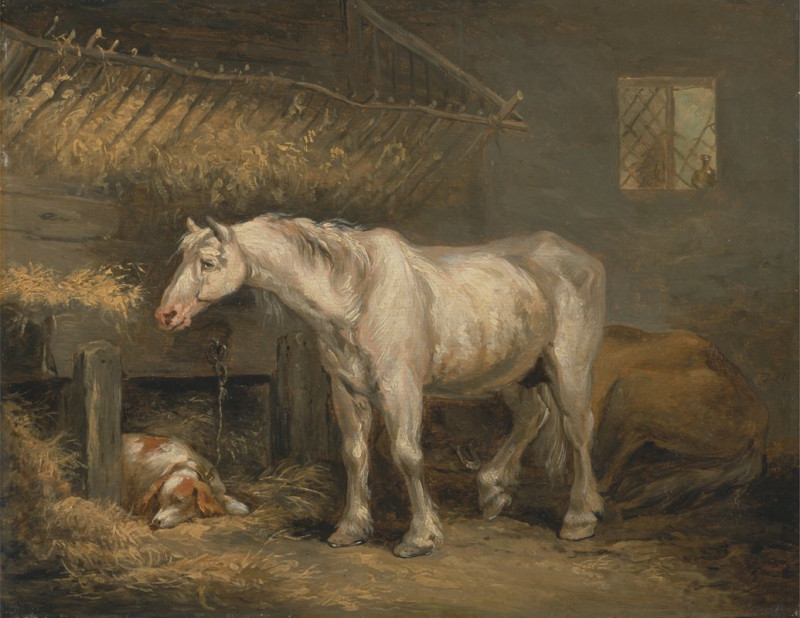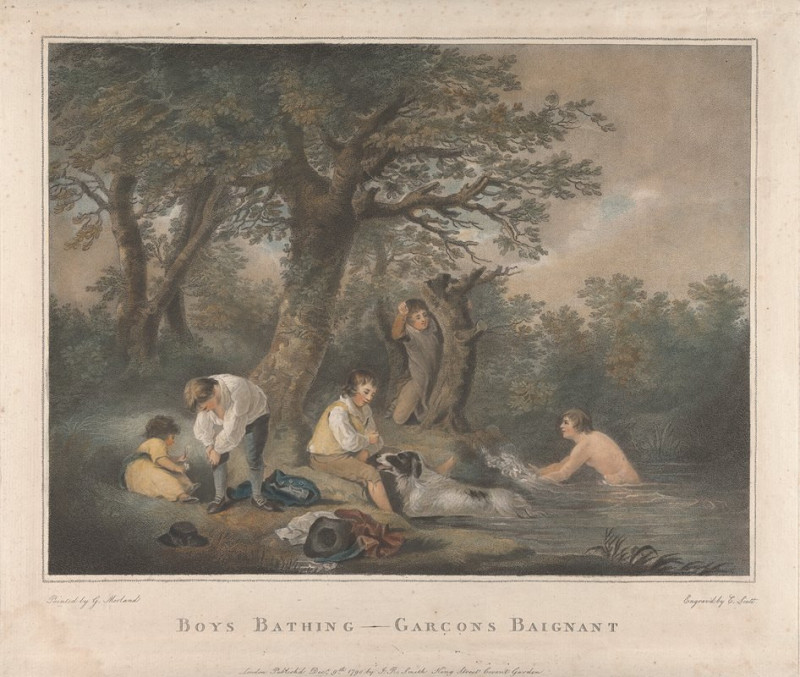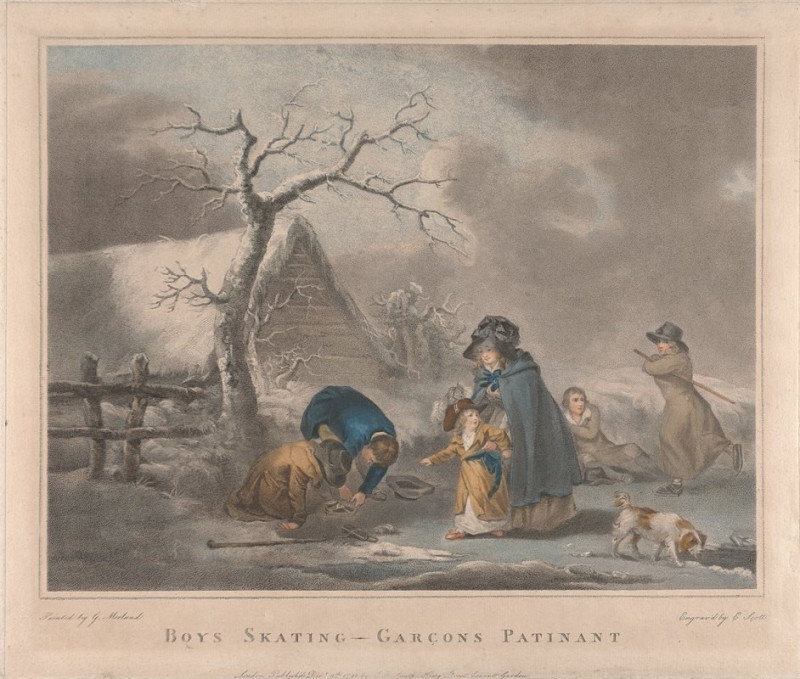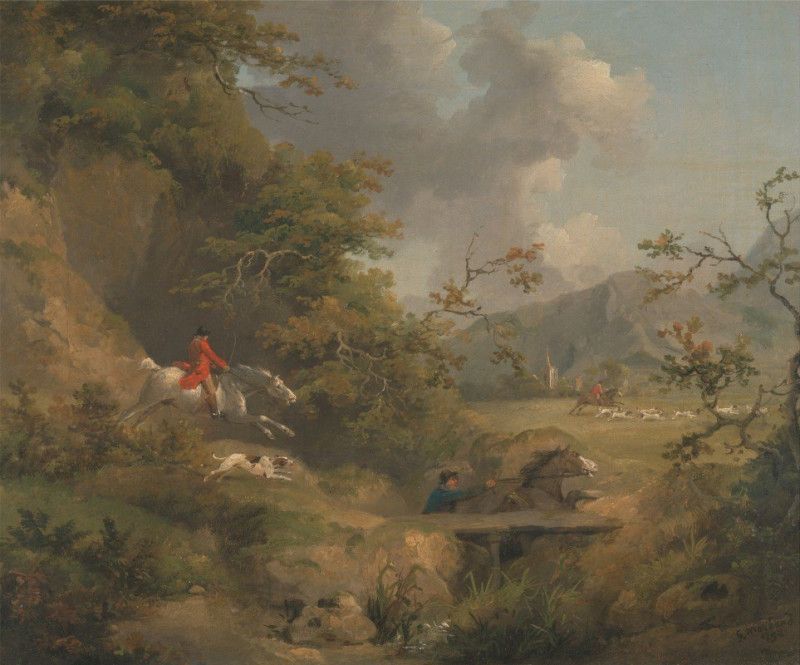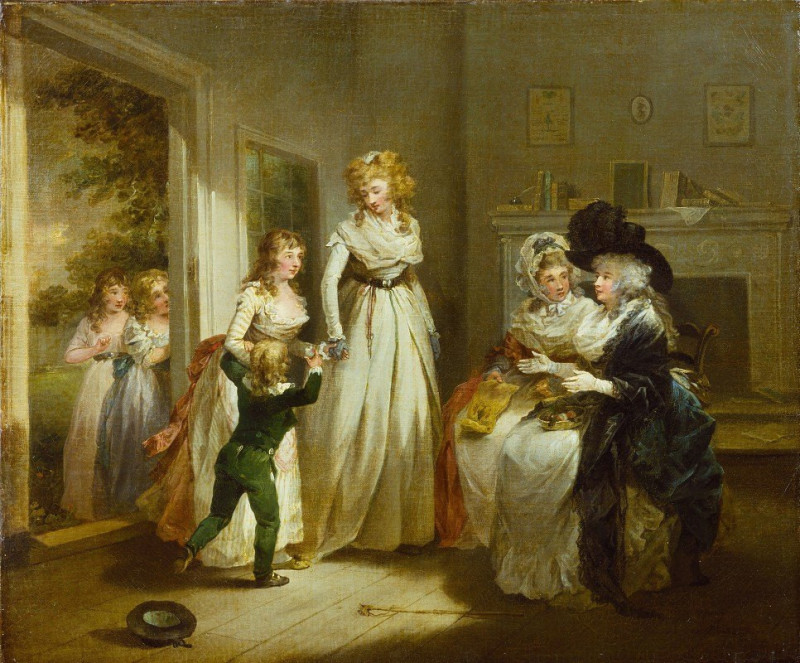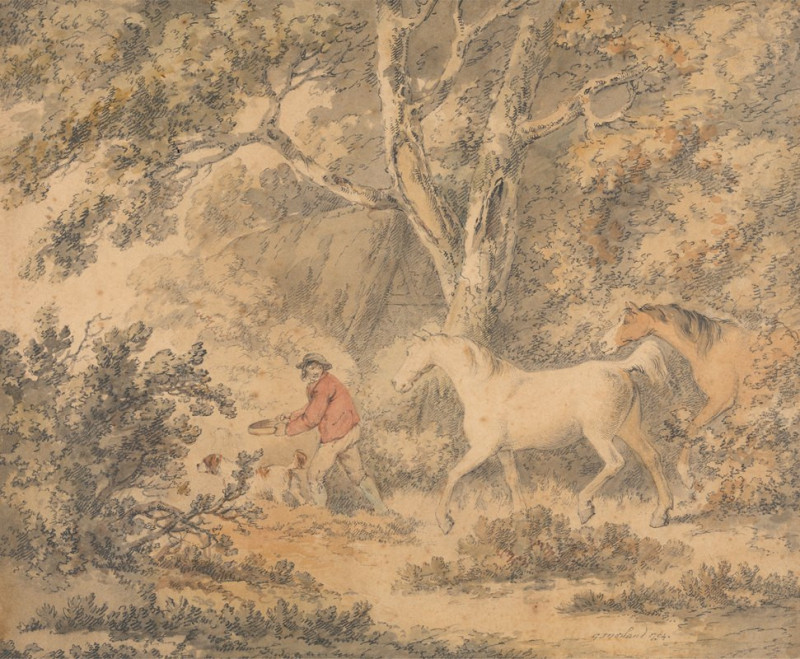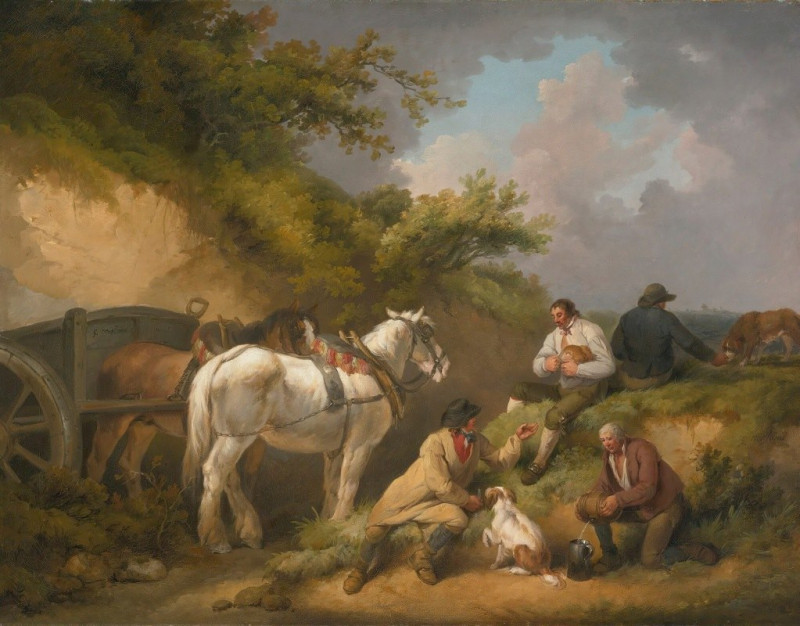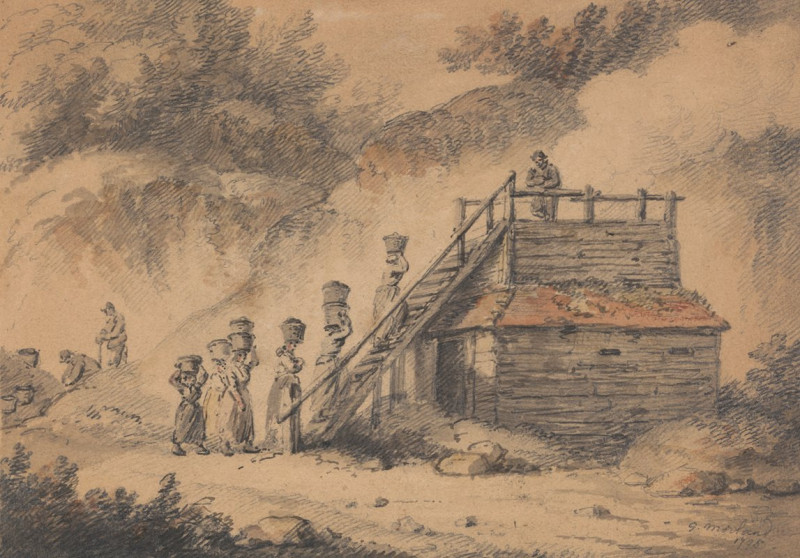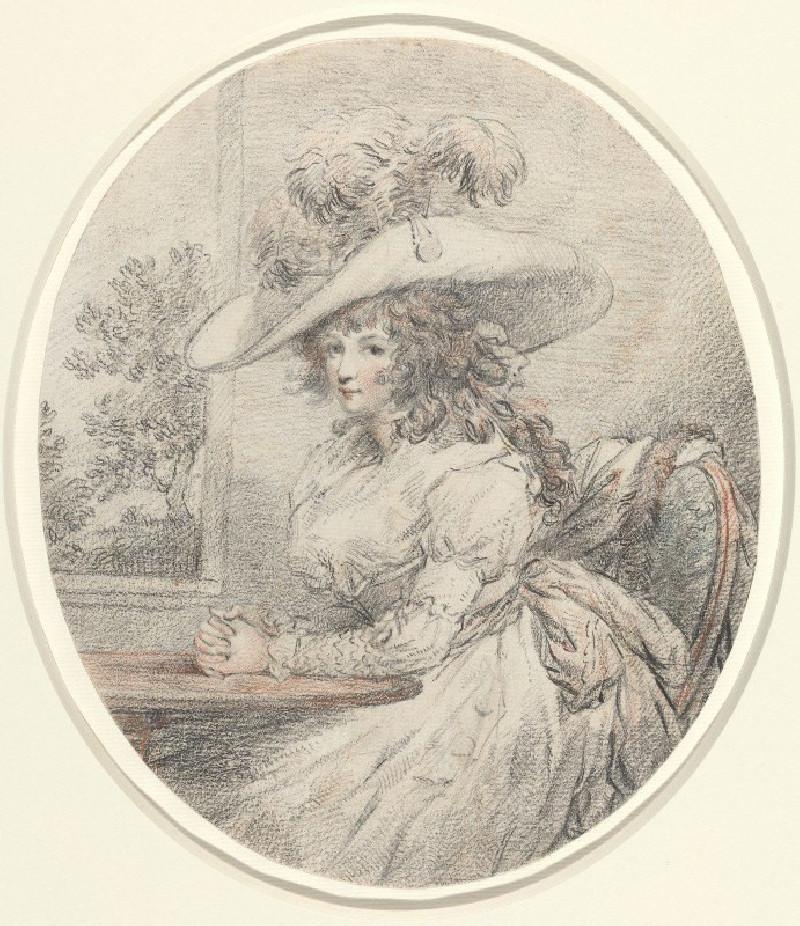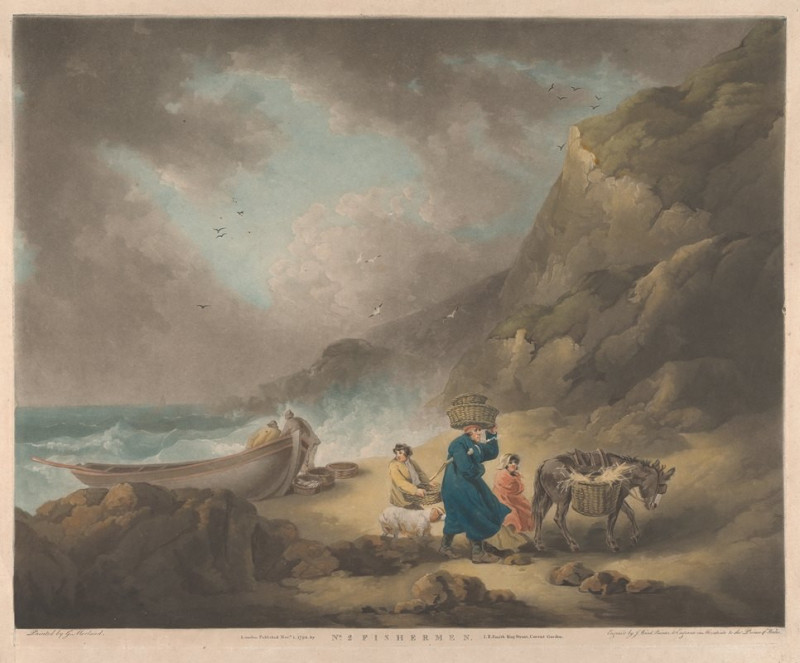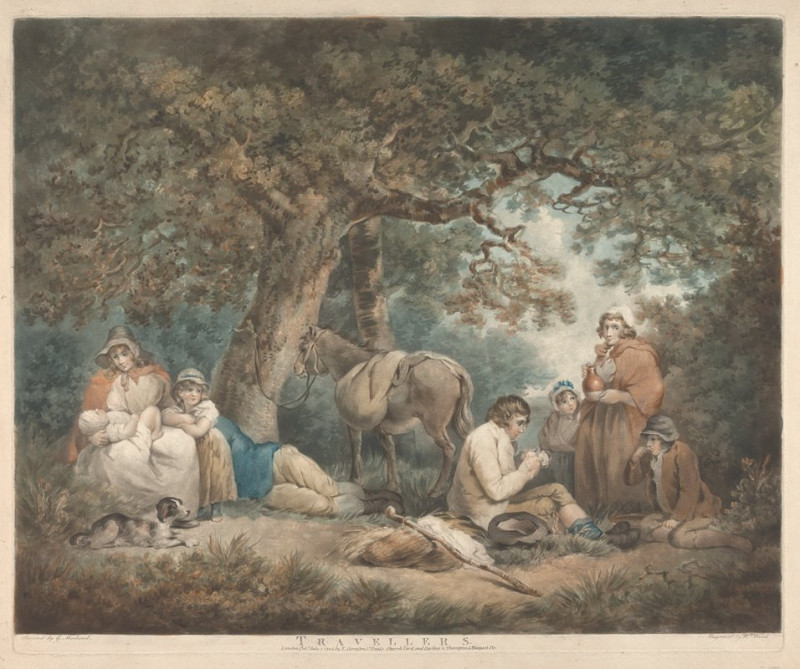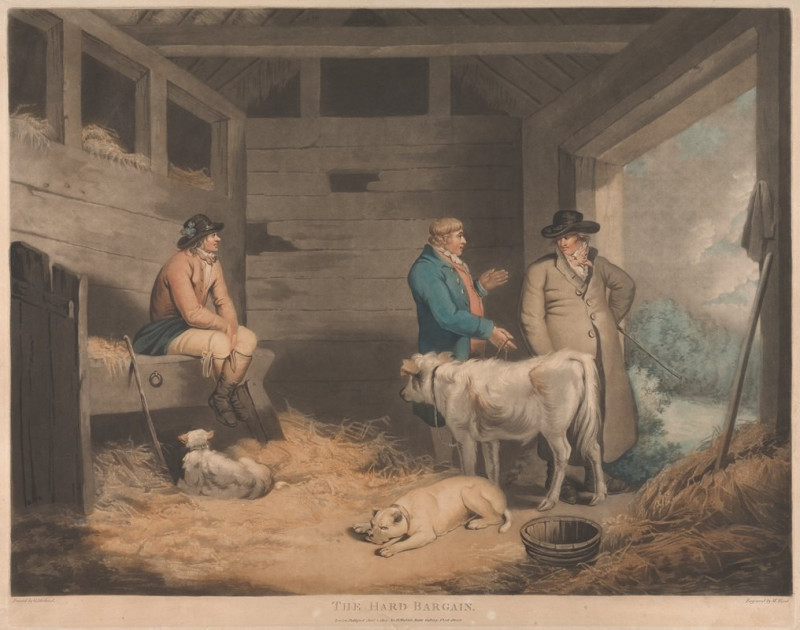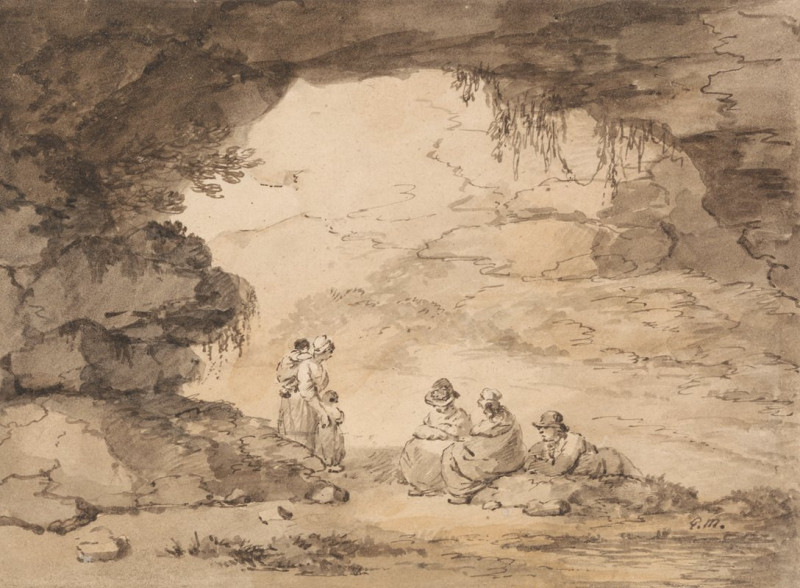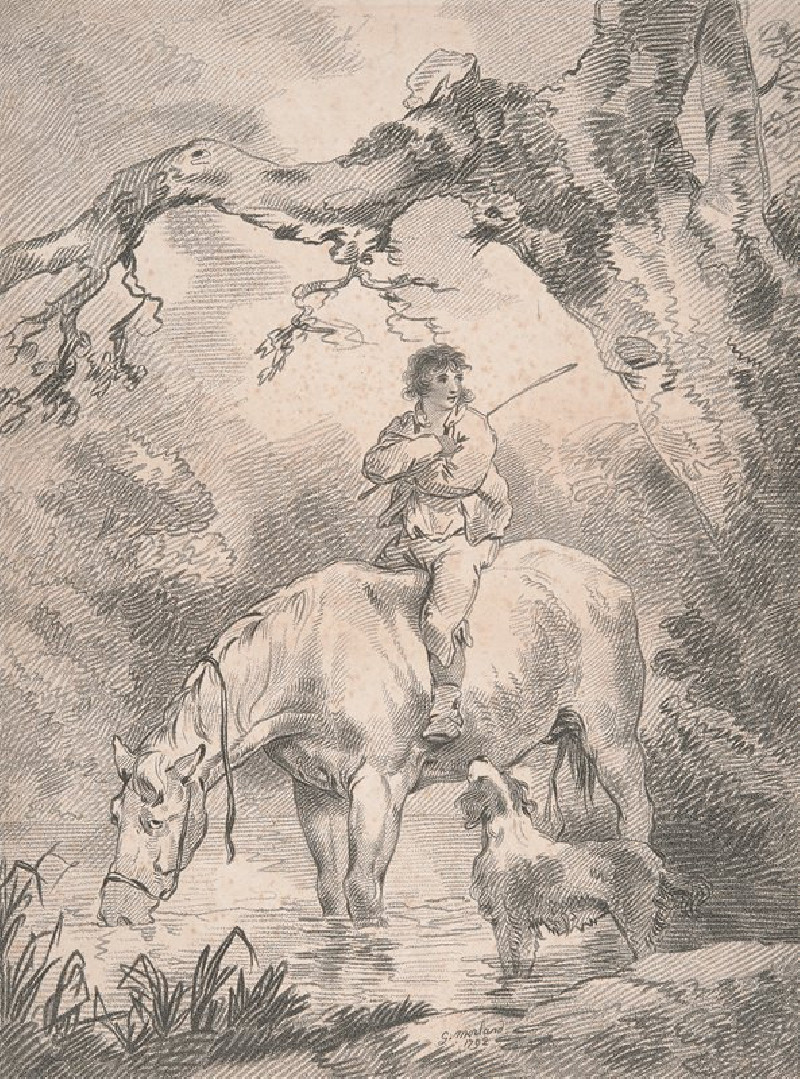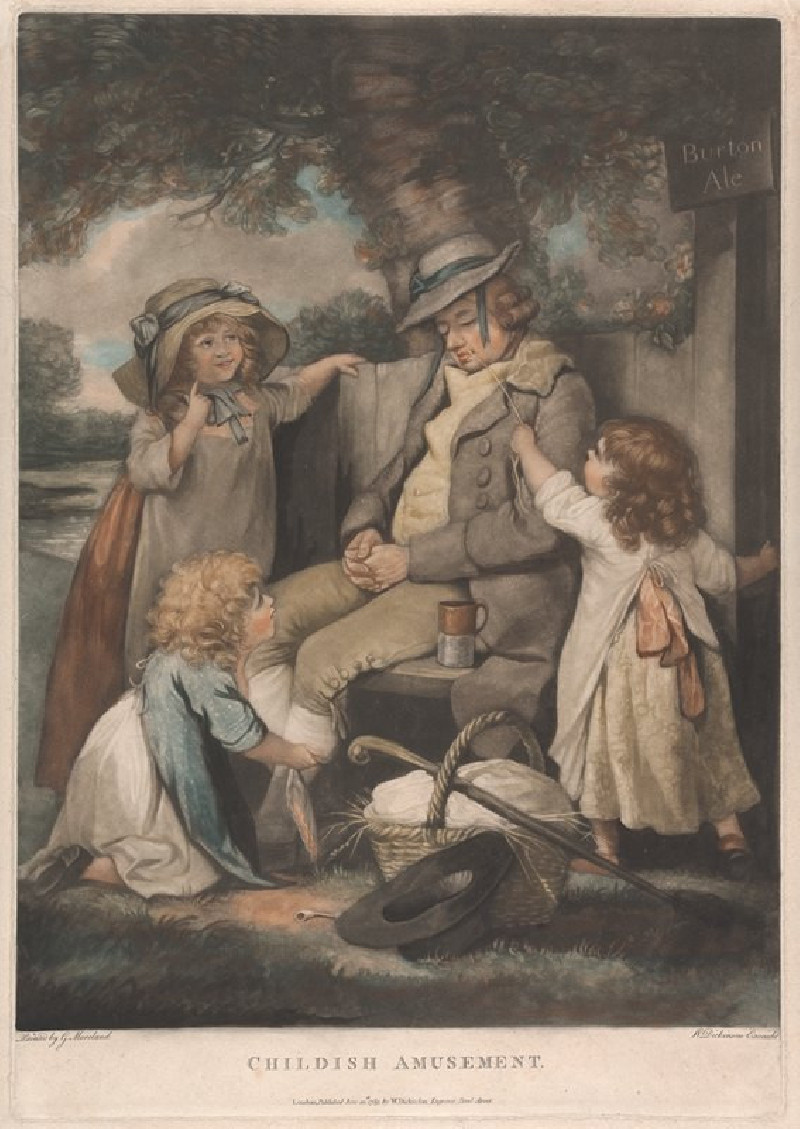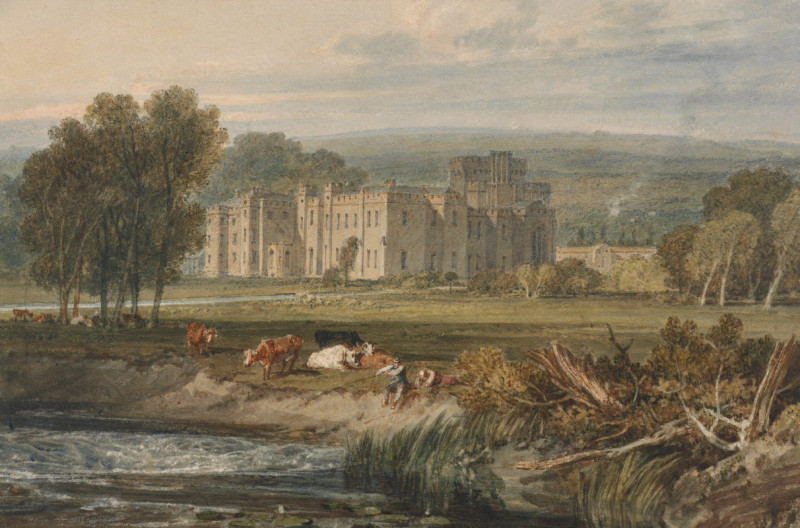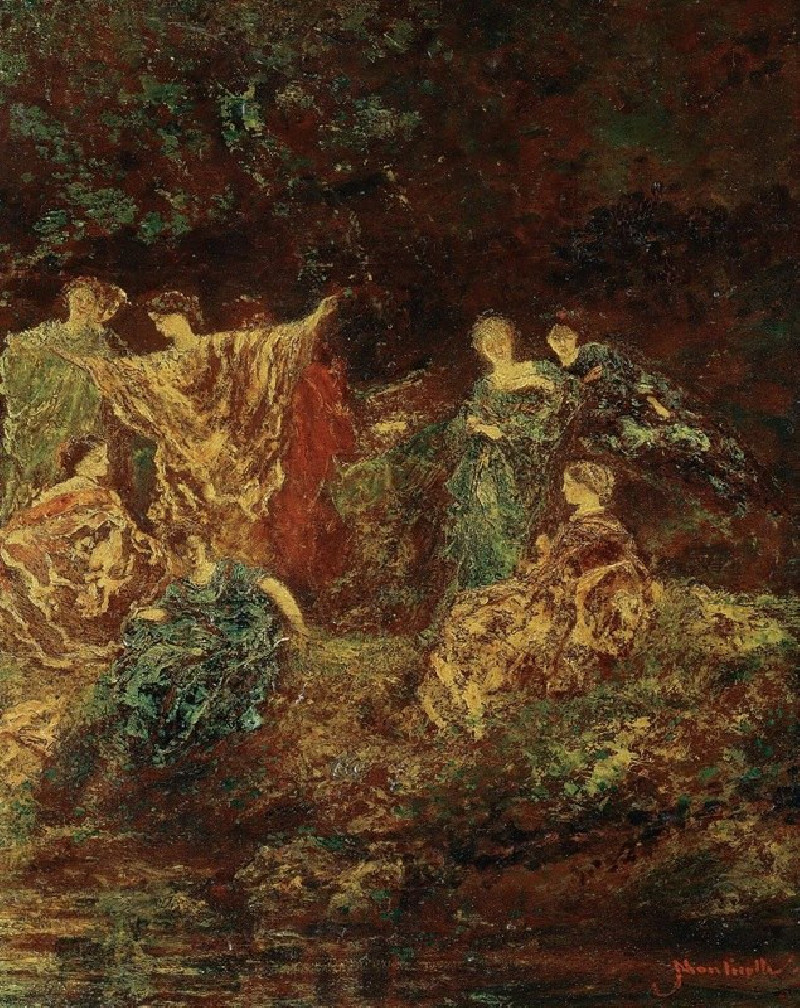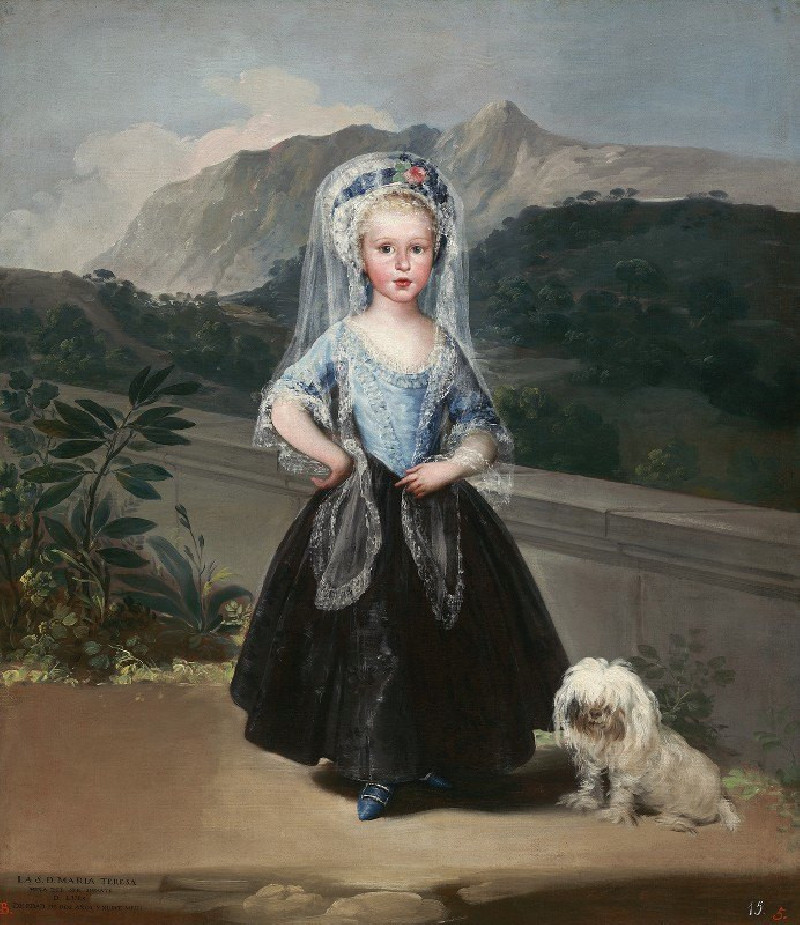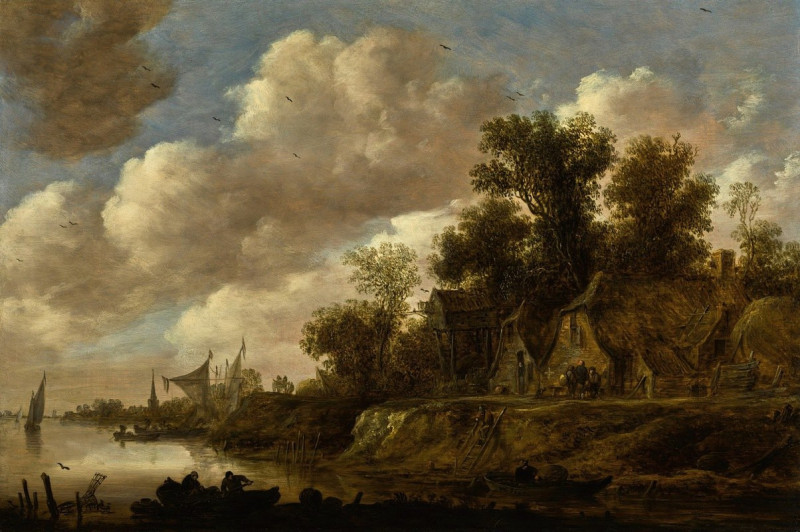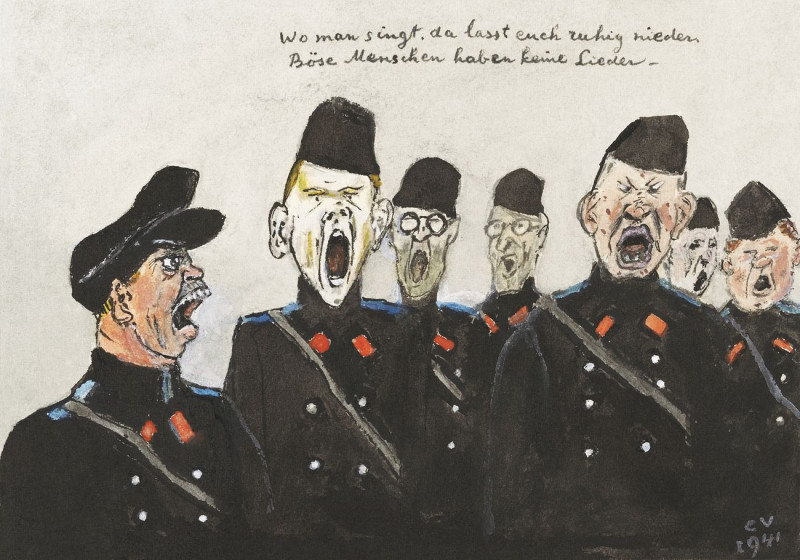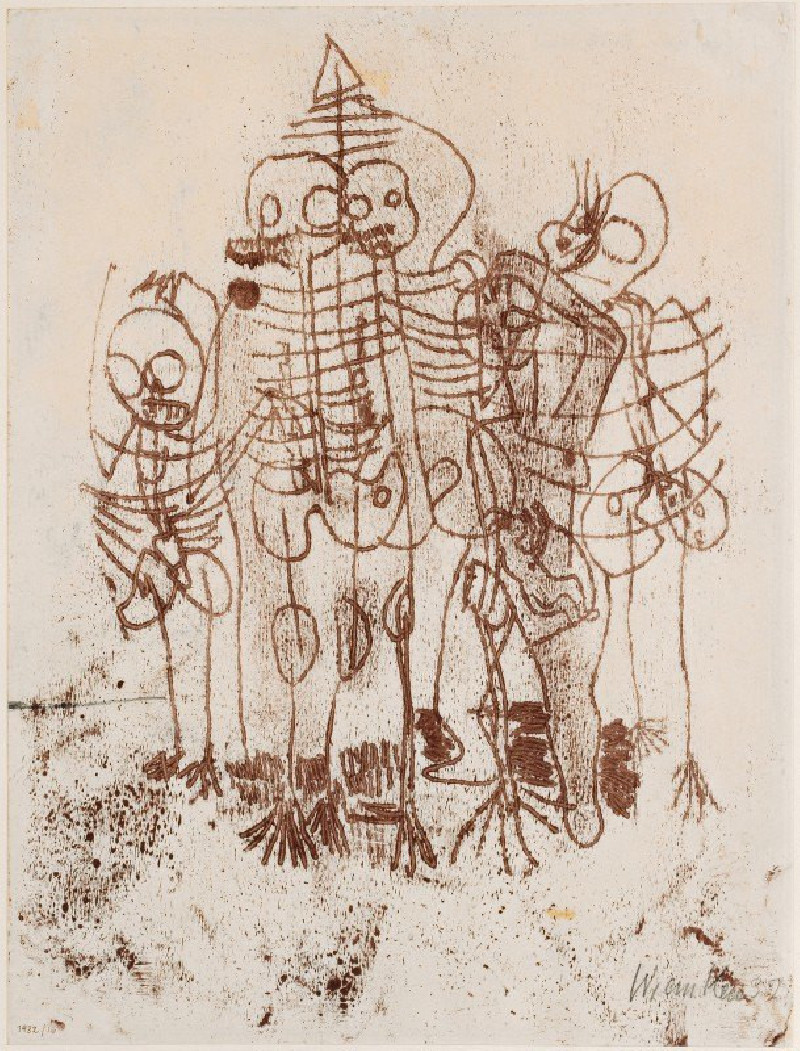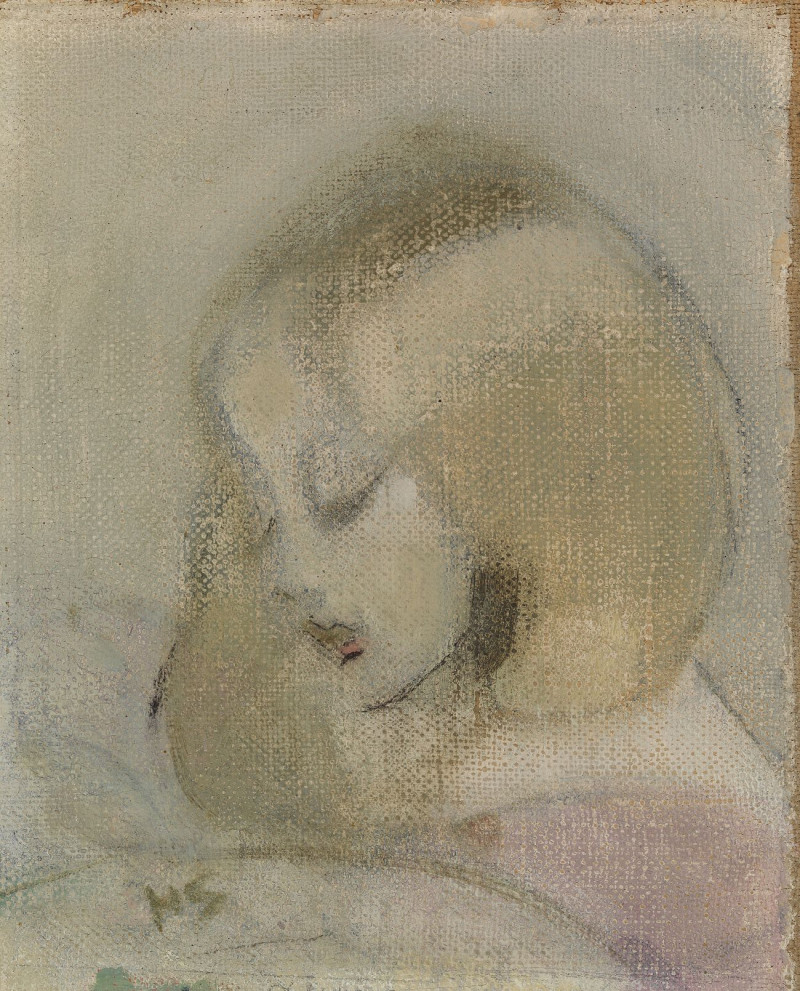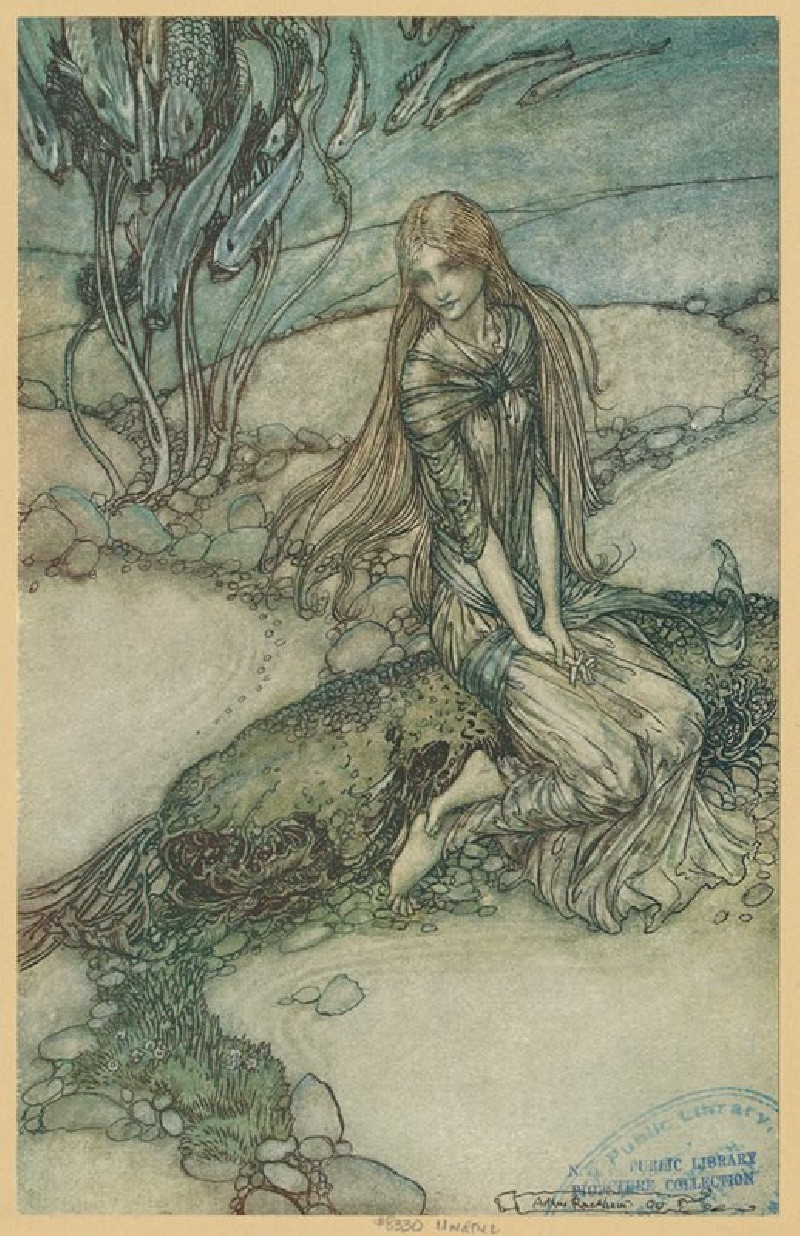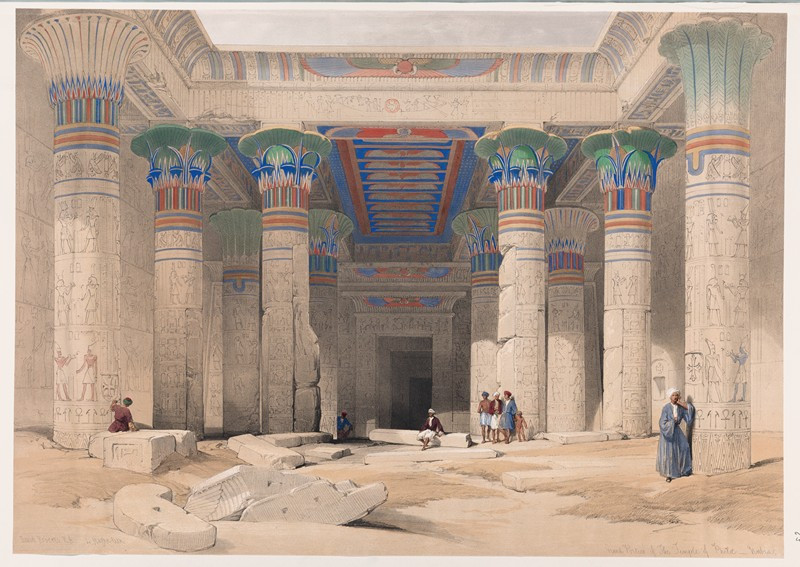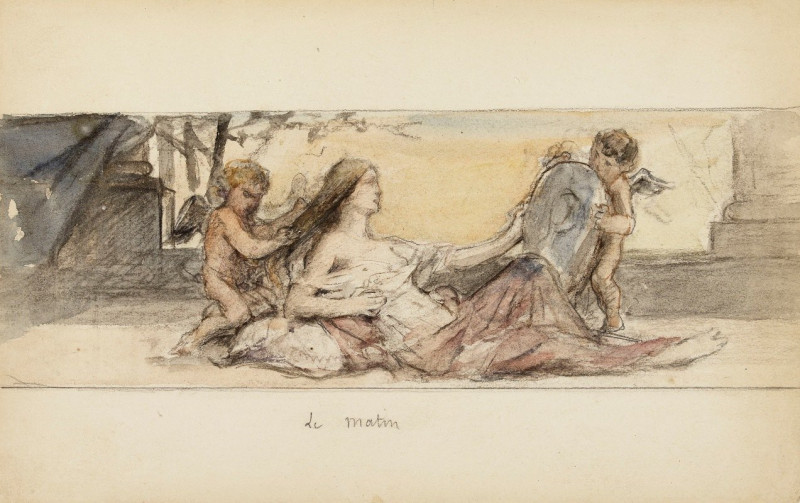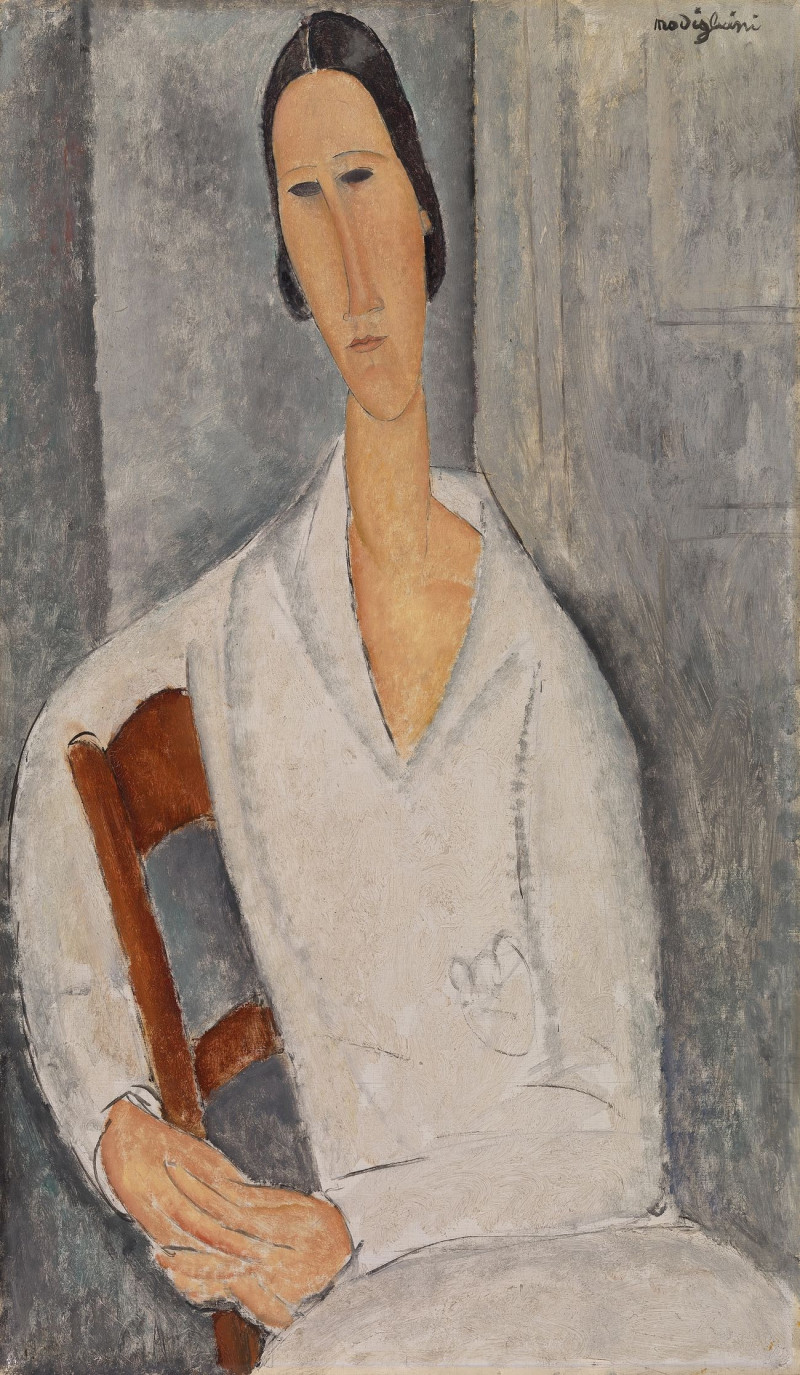The Angry Farmer (1790)
Technique: Giclée quality print
Recommended by our customers
More about this artwork
George Morland's intriguing painting, "The Angry Farmer" (1790), provides a vivid peek into the rustic daily life and emotions of the late 18th century. This artwork, rich in narrative and character, showcases Morland's skill in depicting expressive, lively rural scenes that resonate with viewer’s emotions and imagination.In this composition, we observe a tense moment in the countryside. The central figure, a farmer, appears visibly upset, gesturing and looking towards a young boy who seems to be explaining or pleading, possibly about a mishap or a mischievous act. Accompanying the boy are two other children, one of whom clings to the farmer, looking up at him with a mix of apprehension and concern, while the other sits on the ground, partially turned away, suggesting a sense of guilt or shame.Adding to the scene's bucolic charm are a horse and a cow, which stand behind the group, enhancing the pastoral theme. The backdrop features lush trees and a fence, indicating a typical rural landscape, which Morland portrays with soft, muted tones to evoke a late afternoon ambiance.Morland's adept use of color and light emphasizes the emotional intensity and drama of the moment, while his attention to detail in the expressions and attire of his subjects adds a poignant realism to the scene."The Angry Farmer" is not only a beautiful example of George Morland’s artistic talent but also a fascinating cultural artifact that offers insights into the human and animal relationships and social dynamics of his time.
Delivery
Returns
George Morland (26 June 1763 – 29 October 1804) was an English painter. His early work was influenced by Francis Wheatley, but after the 1790s he came into his own style. His best compositions focus on rustic scenes: farms and hunting; smugglers and gypsies; and rich, textured landscapes informed by Dutch Golden Age painting.

